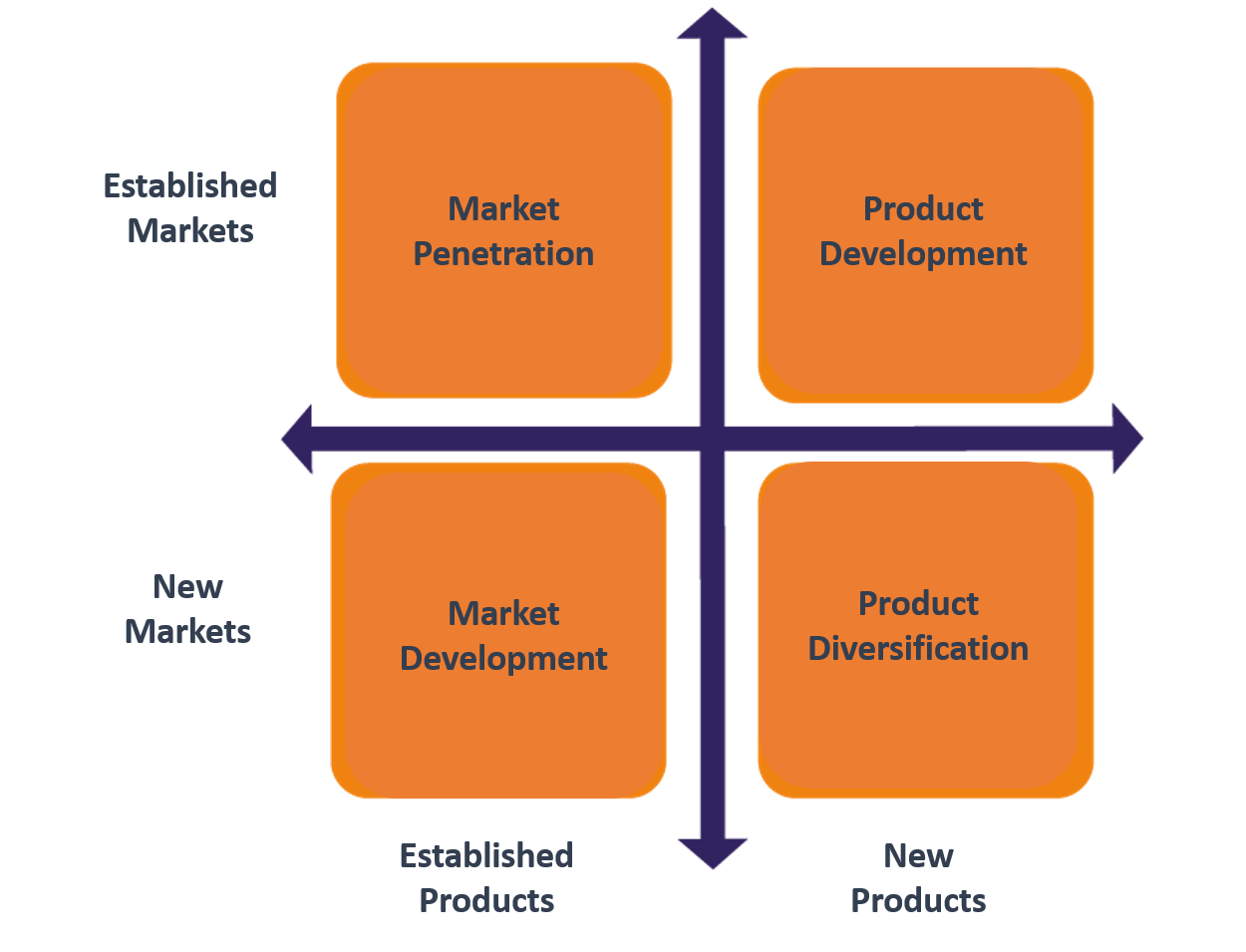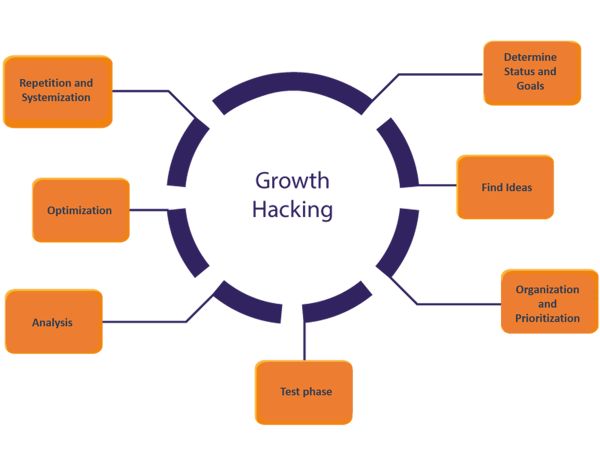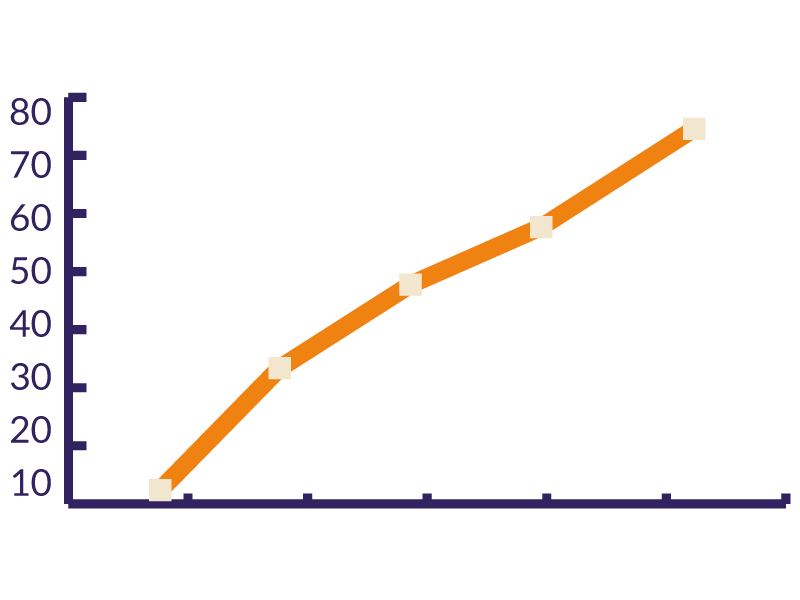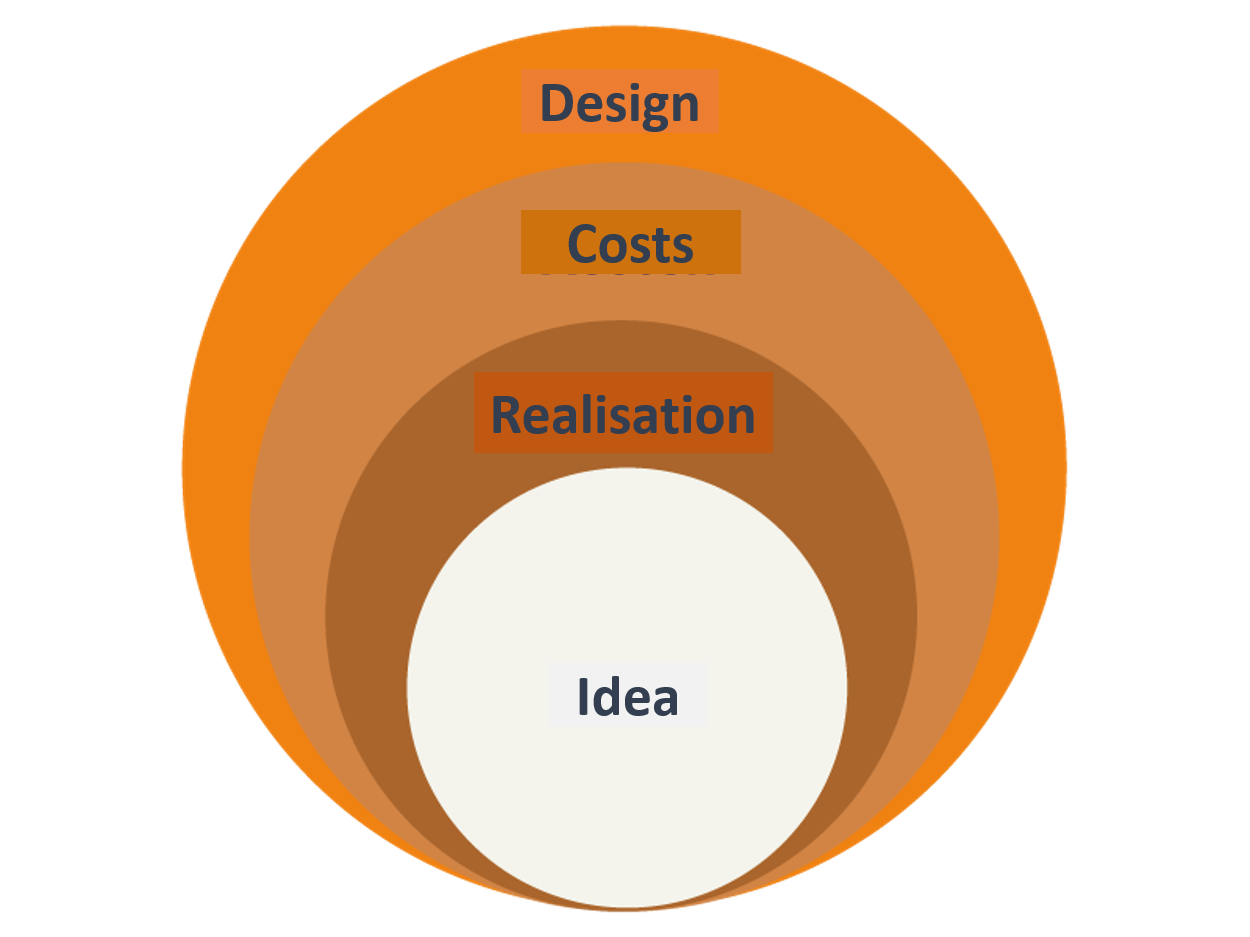Market implementation
Increase in demand from existing customers for existing products
Growth is the result of the right strategy. This is how we have been learning it for generations in management literature and hearing it from management consultants. However, in the digital age, traditional growth strategies become dull, ineffective, and miss important opportunities. The question is: What kind of growth do you want to achieve for your company?
Growth Hacking is a modern growth strategy that goes further than conventional strategy models. With Growth Hacking, you set growth as your GOAL and not as the result of your strategy. Growth becomes the central action criterion in business areas such as marketing, sales, product management, and even customer service.
With Growth Hacking, you integrate growth mechanisms directly into your business model, your product, and your marketing. The focus is on virality, i.e. on the self-reinforcing power of your growth strategy. One customer brings the next. One product sells the next. The more customers you win, the more attractive your product will be to the next customer. Growth barriers disappear. Growth opportunities are consistently generated, analyzed, implemented, and tested throughout the entire company.
If you want to raise your product to market standard and expand your brand to authority and thought leader in the market, Growth Hacking is an important component of your market and growth strategy. Growth Hacking provides you with an effective tool not only as a startup but also as an established company in the B2C and B2B sector, enabling you to grow sustainably in mature or even stagnating markets.
Where there are customers, there is growth. What sounds simple, however, requires clear process thinking and a sophisticated strategy. The growth hacking strategy originally comes from the US start-up scene and was named after the American marketing blogger Sean Ellis.
In 2010, Ellis revealed in a blog article that the most successful companies in the digital era employ specialists in their team called "Growth Hackers" who consistently tap their own company for growth opportunities, collect and prioritize opportunities and implement the most promising measures in a creative and disciplined manner. He defines a growth hacker as part of a company team as follows: "A growth hacker is a person whose true north is growth. Everything they do is scruitinized by its potential impact on scalable growth." They are team specialists whose sole mission is to consistently develop growth opportunities for the company.
Companies that professionally implement a growth hacking strategy turn the product itself into a marketing instrument and the customer into an independent distributor and recommender in the market. Well done growth hacking is a symphony of innovation, analytical thinking, marketing and sales experience, and a large part of creativity with a common tone: Growth!
Growth Hacking is a growth strategy that is geared to the challenges and opportunities of the digital era. It is about quickly and creatively identifying growth opportunities, learning through testing and analysis, and thus continuously driving the growth of your own company. With this strategy and their own growth hacking system, companies such as Facebook, Uber or Airbnb have created exponential growth and increased their sales tenfold or a hundredfold.

Classic growth models do not achieve all this to the extent required by the digital transformation of our markets. The classic among traditional growth strategies is the so-called Ansoff Matrix (or Product-Market-Matrix). It goes back to the American researcher and mathematician Harry Igor Ansoff, who is considered the founder and namesake of strategic management. The Ansoff-Matrix assumes that the possible growth strategies of a company are determined solely by the sales markets or customer groups and by the products of a company.
According to Ansoff, successful growth strategies are created by different combinations of sales markets or customer groups and products. Classically there are exactly (and only) four possibilities in the Ansoff-Matrix to create growth for your own company.
Increase in demand from existing customers for existing products
Creation of new products or variation of the existing product to address existing customer groups
Creation of new sales markets or addressing new customer groups for existing products
Development of new products in combination with the development of new markets or addressing new customer groups
The Ansoff matrix has been the predominant analysis tool for strategy selection since the sixties of the last century. It is still used intensively in consulting and management today. However, digitization has long since created completely new rules of the game, competitive conditions, and growth opportunities (e.g. digital disruption) in many markets. It has long since ceased to be just about product and customer groups, but also about establishing and defending business models through the fastest and most sustainable growth possible.
An unreflected focus on traditional strategies such as the Ansoff model can lead to serious problems for companies in this context. Markets have long since become complex, dynamic systems with countless players. And: "growth at any price" has long ceased to be an option if it infringes on the needs of customers, employees, society, or the environment.
Modern strategies are needed to develop growth even in stagnating markets. This is where growth hacking comes into play. Growth Hacking is not based on management principles or instruments. It does not exclude classical instruments such as the Ansoff matrix but adapts them against the background of a dynamic environment. Growth Hacking is a growth strategy, management model and leadership principle in one.
Growth hacking is a strategy for achieving large growth in a short period of time - both in terms of the number of customers and turnover. This can make the difference between slow and exponential growth. Companies such as Airbnb, Facebook, Dropbox or Paypal have used growth hacking in a targeted manner to generate millions of prospects, users and customers in a very short time. In doing so, they have focused on a few, selected measures that have acted as growth accelerators. In this way, they have become the market and thought leader in their segment. Here are some historical examples:
Customers as automatic recommenders: Companies such as the email provider Hotmail build an automatic recommendation to other users into the use of their email account. Targeted personalized product design and marketing automation can extend this advantage even further. This mechanism is also called the "automatic virality" of the product.
Open the business model to all sides: B2B providers such as Dekra use all levels and links of their business model "security" to tap synergies and growth. From testing services to the training of security experts and consulting services - all services are interlinked and coordinated. Thus, a purchase automatically leads to follow-up purchases, cross-selling and a high customer lifetime value. The company also relies on alliances with partners in the value chain (partner marketing).
Connecting customers with potential customers: Incentives and recommendations for further product users are the growth secret of companies such as Twitter and Paypal. Unlike conventional "customer-want-customer" programs, they do not simply set monetary incentives, but use the customer's entire customer journey to find the right mechanism that removes buying barriers.
Integrating viral effects into the product: Facebook employs entire growth hacker teams. Their idea was to address non-customers as well when they were tagged in a Facebook user's picture. Human curiosity and a little psychology ensured that so many new users were won over.
Thought leadership in the mindset of customers: The presence of every B2C or B2B brand today is decided on the Internet. Part of growth hacking is to make your brand the central authority (thought leader) in people's minds. A growth hacking strategy is based on integrated online marketing - with professional search engine optimization (SEO) and topic leadership (topic hacking). With blogging, content marketing, and social media marketing, you become the central point of contact on the web for the topics that move your own customers.
Integrate aha-customer experiences in important places: the use of machines, smartphones, services, and software has one thing in common: there is always a specific point in the course of the customer experience (or user experience) at which the customer unconsciously builds up a loyal connection to the brand. This point is different for each product, but with Growth Hacking it can be easily determined through data analysis, creativity techniques, and testing.
It is often the simple but ingenious idea that strengthens a company in the long run without losing its own brand identity and at no great cost. Successful growth hacking does not follow a fixed strategy. It is rather a kind of fluid process that can be adapted to any product or company. This requires a solid mix of data analysis, marketing and sales experience, process and project know-how.
We at Thought Leader Systems are your partner for growth through Growth Hacking - from brainstorming on growth opportunities to prioritizing and analyzing them, to supporting their implementation and optimization in your company. So that your company "hacks" new growth with fresh ideas and verve.
A growth hacking strategy is thinking in processes. There are no elaborated program points, rather stations between which interactions can and should arise. The growth hacking path is not a one-way street. One moves back and forth between the individual points of the growth-hacking process in order to test and optimize further and further.
In this way, Growth Hacking finds the middle course of the individual growth strategy for each company. It creates a clear agenda for customer and sales growth and at the same time allows a lot of freedom and creativity to discover new growth factors


With Growth Hacking various growth targets can be achieved. How do you define growth for your company? Do you want to reach as many new customers as possible in a short time? Is it about achieving ambitious sales targets? Do a status review of your company and your products in order to track down sleeping growth potential. A neutral view from the outside is usually helpful to integrate a lateral thinking perspective.
Define the status, i.e. the "jumping-off point" for your growth offensive. Then it's time to determine the future achievement of objectives. How and how will you determine the growth success of your growth hacking? Is it not only about achieving business goals, but also about a change in the perception of customers, employees, and the public?
For Growth Hacking an existing product is nothing more than a bridgehead in the market. Products are only the starting point on the way to a growth idea that inspires customers and generates growth.
„Give me a point to step on and I'll move the earth." Archimedes
Archimedes already knew: With the right product behind you and a good idea, the world is at your feet. The quote symbolically captures the mindset with which we want to work with you to find ideas for your growth hacking strategy.

There are no limits to creativity. With curiosity and courage, growth ideas are created that will take your marketing and customer relations to a new level. Revolution is the "fundamental innovation of something" (Wikipedia). It is about nothing more than that - but also nothing less.
Growth is a team task. Your growth hacking team includes key specialists for products (e.g. engineers/software designers), marketing (e.g. SEO, data analysis), sales, and customer management. Network your internal growth hackers and set up a long-term growth hacking process, preferably with the support of an experienced external partner.
An important aspect of growth hacking is the organization and prioritization of the collected growth ideas. By analyzing and comparing the internal ideal portfolio and benchmarking, we develop a clear understanding of the quality and feasibility as well as the potential for success.

This phase of developing a growth hacking strategy requires analytical knowledge about possible risks, costs and the potential benefits of the ideas. The evaluation with regard to these attributes not only establishes the connection to reality, but also helps to find and elaborate the potentially best idea(s).
For this purpose we rely on our growth hacking concept called EPIC. With this we describe the four central success factors of a growth hacking strategy:
With our proven growth hacking model you can determine the success value (so-called EPIC score) for each growth hacking measure. Compare the chances of success of different measures and prioritize the starting set of your measures for the first growth-hacking campaign. Combine several growth-hacking measures for a self-reinforcing growth-hacking system.

The developed growth hacking strategy is implemented in test runs. With the help of control groups, data on impact, and costs are collected.
The information collected is not only used for the growth hacking itself. The Big Data we collect helps you and us to get a better picture of the growth factors of your company. In this way, we can also be of assistance to you during subsequent optimization. If there is a need to revise the idea that has been developed, this is not a waste of time.
A thorough analysis of the collected data serves to evaluate the proposed ideas and whether these ideas are actually suitable for use in your individual growth hacking strategy.

The recorded results are compared with the previously made assumptions and objectives. In this phase, we at Thought Leader Systems show you how and why there may be discrepancies between assumptions and results.
After analyzing opportunities, risks and potentials, we bring your growth hacking strategy further on track and develop suggestions for improvement regarding growth ideas and their implementation. This process is the actual core of Growth-Hacking - it is not a project, but a continuous growth process.

We help them to transform the collected and analyzed data into concrete growth hacking to-do's.
Growth-Hacking is an organic optimization process. Accordingly, it is important not to get too attached to the original basic idea for a growth measure. The willingness to change is very important and allows you to further cut the unpolished "diamonds" of your growth ideas and thus give them their true brilliance.
Implementation and possible ongoing test runs are part of the growth hacking strategy. The underlying processes become more and more professional until the finalization and reduce the risk of errors in the final implementation to a minimum. Not only the growth idea itself, but also its implementation is subject to the premise of continuous optimization.

The optimized growth hacking measures are implemented in the final growth strategy and integrated into the company's system. The path of growth hacking is only just beginning, because the growth concept should now be continuously maintained and developed.
With the portfolio of already identified growth ideas in the back of the hand, the wave of next ideas can already be worked out and prepared during the systemic implementation of the current ideas.
About TLS
Contact
Newsletter